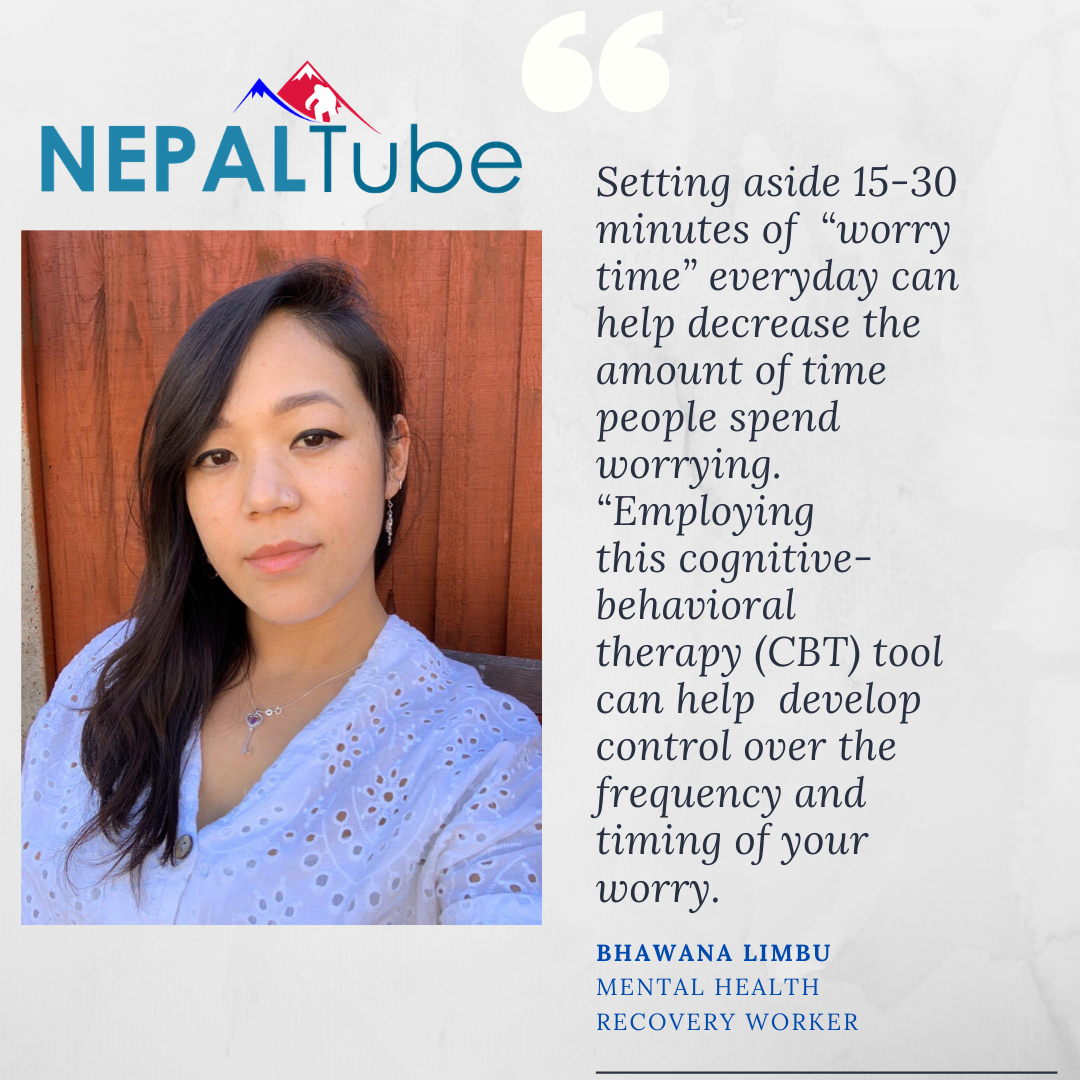SCHEDULE A ‘WORRY TIME’ SAYS MENTAL HEALTH PROFESSIONAL

BY SARALA THAPA (NEPALI)
The COVID-19 pandemic and the nationwide lockdown, enforced since March 24, in Nepal are taking a toll on the mental health of people, triggering new issues while exacerbating existing ones, say public health experts.

“Talking about your worries and scheduling a WORRY TIME will help manage mental wellbeing” say Bhawana Limbu, a Mental Health Recovery Worker in the UK.
Bhawana adds, “It’s normal to feel a bit worried, scared or helpless about the current situation. Remember: it is OK to share your concerns with others you trust – and doing so may help them too.”

She further advices “During that 15-30 minute window, write down all of your worries that you can think of. Don’t put pressure on yourself to solve them during that window, but if your mind naturally goes there, that’s fine.”
This technique known as stimulus control training in the CBT world teaches you how to contain your worry to designated periods, thereby freeing up the mind for other important, interesting or fun activities.
Essentially, you’re training your brain to spill out all of your worries, concerns and anxieties at a set time, sort of like a brain dump. Here’s how to put “WORRY TIME” into practice.
Step 1: Schedule a Dedicated Time for Deliberate Worry
TRY to choose the same time every day which signals to your brain that this is the time and space to worry, not as you’re trying to go to bed or the middle of the night.
Step 2: Embrace the Brain Dump
WRITE out your worries on an old school paper notebook or on your phone’s notes.
List as many of your worries and concerns as possible so that your brain learns.
Step 3: Highlight Actionable Problems
Next comes separating actionable items from hypothetical worries.
“To identify these actionable problems, single out items that are
A) actual problems (not hypothetical worries),
B) urgent (they should be done in the next day or two),and
C) things you have direct control over”.
You can learn more about the research supporting this tool here:
Stimulus control applications to the treatment of worry – Penn State University, Dep’t of Psychology




















तपाईको प्रतिक्रिया